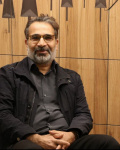| نویسندگان | Saeed Ilbeigi,Mohammad Hamed Hosseini,Rashid Heidarimoghaddam,Mehrdad Anbarian,Leili Tapak |
|---|
| نشریه | International Journal of Industrial Ergonomics |
|---|
| شماره صفحات | 1-8 |
|---|
| شماره سریال | 94 |
|---|
| شماره مجلد | 21 |
|---|
| نوع مقاله | Full Paper |
|---|
| تاریخ انتشار | 2023 |
|---|
| نوع نشریه | چاپی |
|---|
| کشور محل چاپ | هلند |
|---|
| نمایه نشریه | ISI،JCR،Scopus |
|---|
چکیده مقاله
Designing one-handed carrying tasks based on biomechanical findings has a considerable effect on preventing
musculoskeletal injuries. The purpose of this study was to investigate the effect of height difference of team
members on their head and trunk angles in two-person carrying with one hand and compared to individual
carrying. In this experimental study, 25 male volunteers performed no-load, 3.5, 7, and 10.5 kg walking trials
individually and 7, 14, and 21 kg in teams with one hand in a distance of 30 m. A commercial IMU was used for
analyzing the participants’ head and trunk angles in frontal, sagittal, and transverse planes. The mean and
standard deviation related to the participants’ age was 21.24 ± 1.42years. A significant difference was observed
in the lateral bending of head and trunk in the frontal plane in taller members of the team compared to individual
carrying. In addition, in team carrying, with an increase in weight, extension of the trunk increased significantly.
In team carrying, right twisting of the head was reduced significantly. The motion of head and trunk in individual
and team carrying, similar to the no-load trial, was reversed in all three planes. In one-handed team carrying,
when there is a difference in height between the team members, lateral bending of the head and trunk in the
frontal plane will be greater for the taller team member compared to individual carrying. Therefore, in designing
these tasks, enough attention needs to be paid to team members’ height differences to prevent the likely injuries.
لینک ثابت مقاله
